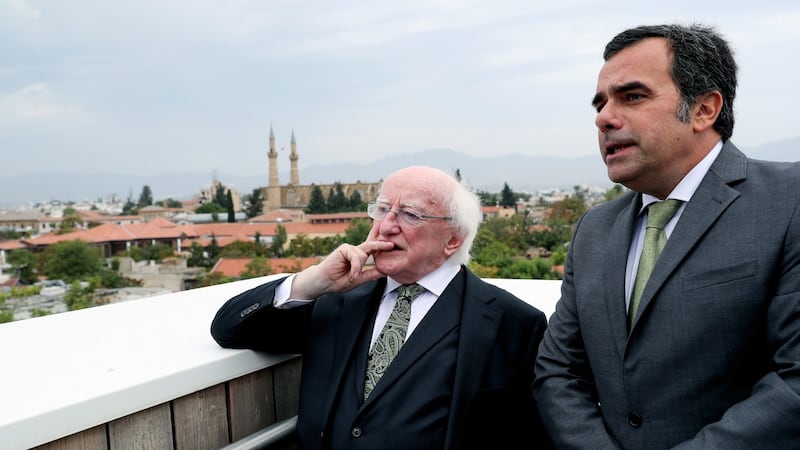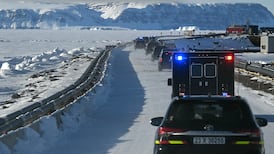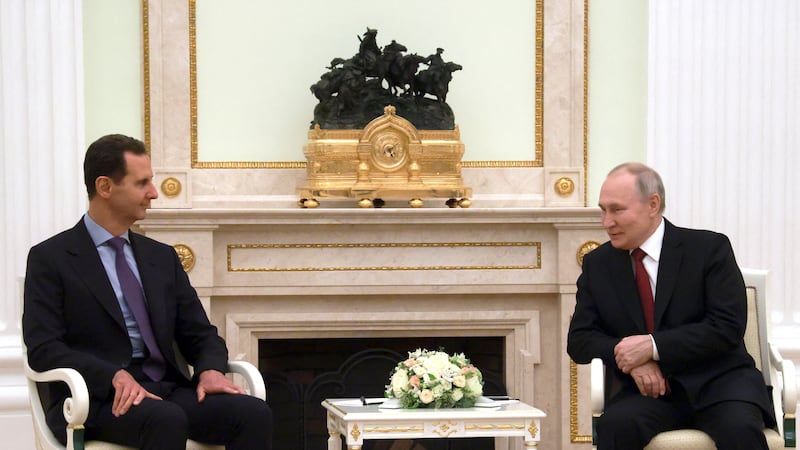During a visit to the Cyprus Committee on Missing Persons, President Michael D Higgins praised the team of young forensic scientists who are analysing the remains of missing Cypriots from both communities who met violent deaths over the past 55 years.
He spoke of the challenges posed by the task of recovering and identifying the bones of more than 2,000 missing persons in order to provide answers to the families of relatives who cannot grieve properly until the bodies of loved ones are buried.
“It doesn’t wipe off what happened but it does allow the darkness to lift a little and for, going on into the future, enables families to feel the missing person has been laid to rest decently in accordance with the norms of their families and their societies.”

He also commended the members of the committee, Greek Cypriot Mr Leonides Pantelides, Turkish Cypriot Mrs Gulden Plumer Kucuk, and UN-appointed Mr. Paul-Henry Arni, formerly with the International Committee of the Red Cross.
More than 60 forensic scientists from both Cypriot communities, the majority young women, are employed at committee headquarters in the UN-controlled Nicosia area buffer zone dividing the republic from the Turkish occupied north. So far 1,200 remains have been retrieved and 955 identified of the 1,500 Greek Cypriots and nearly 500 Turkish Cypriots who disappeared during intercommunal clashes in 1964 and the Athens junta coup and Turkish invasion a decade later. The scientists use anthropological and genetic analyses of remains without attributing responsibility for death.
The EU is the largest donor, with member states making separate contributions. President Higgins is particularly proud of Ireland’s financial aid, amounting to €350,000 since 2006. During a tour of the laboratories, he was able to view the systematic approach adopted towards each set of tragic browned or bleached bones.
Since 2012, Cypriot scientists have worked with the Iraqi government to train personnel and help discover and identify remains of up to one million people.
President Higgins’s motorcade was whisked out of the buffer zone to cross into the Old City through its 16th-century Venetian walls and wend its way through narrow streets to the new Nicosia municipality, a modern glass-fronted building towering over an archaeological site under excavation. From the roof, the President and his party were able to see the whole of the divided city, the red-tiled roofs of the Turkish Cypriot area and the white multi-storied blocks of the Greek Cypriot sector, the two connected by crossing points. Nicosia mayor Constantinos Yiorkadjis related the history of the city and the problems of partition and discussed the impacts of Britain’s exit from the EU on Ireland and Cyprus.
A tour of the ancient site of Greco-Roman Kourion was cancelled due to rain.
Tomorrow, President Higgins is set to address parliament and visit the mountain village of Lefkara and the port city of Larnaca before flying to Lebanon for an official visit.















